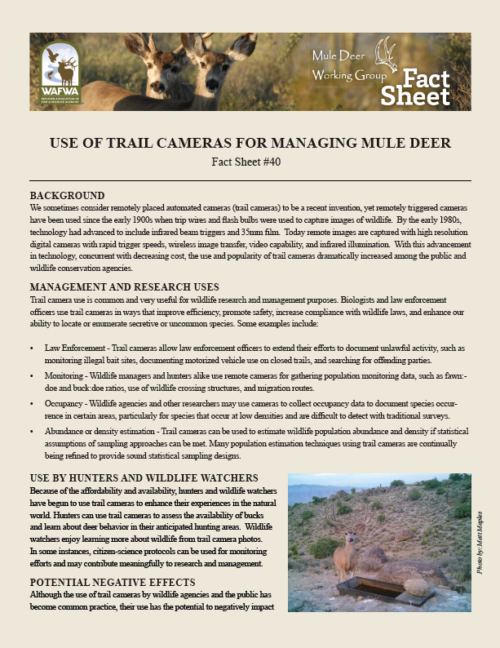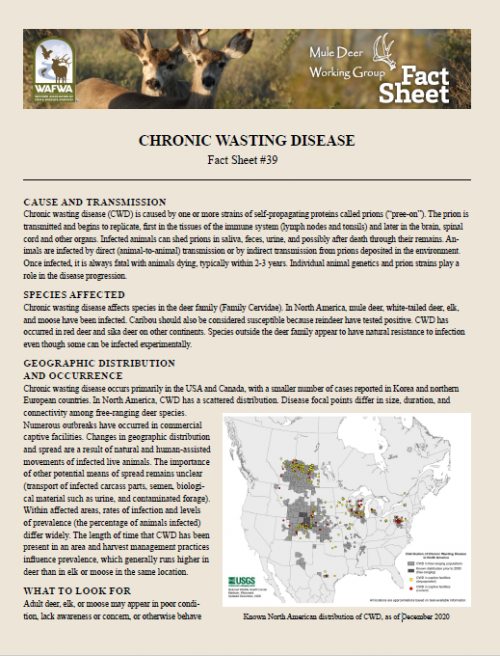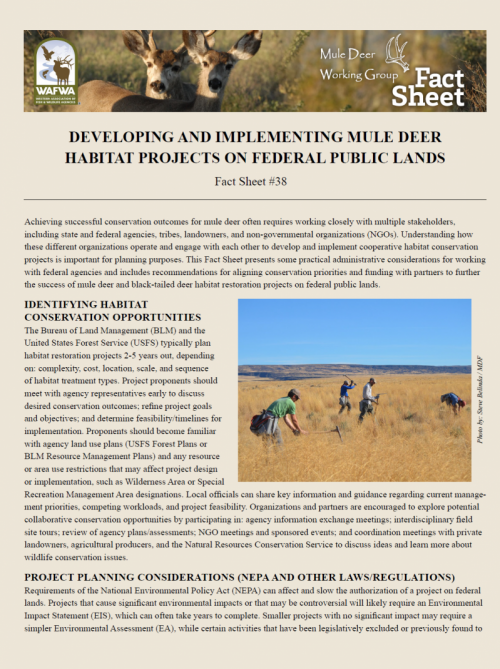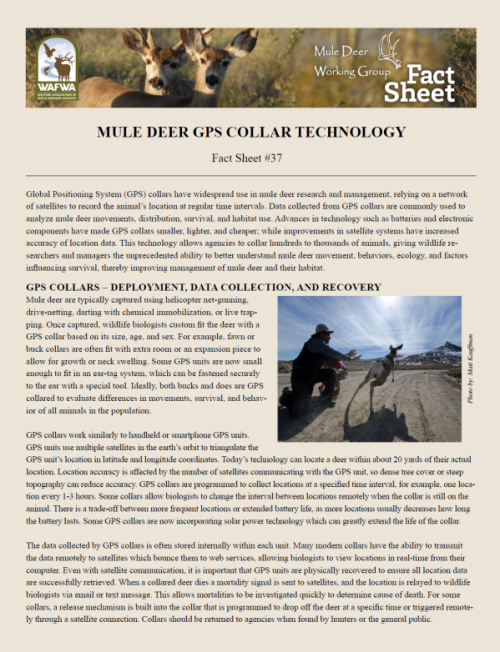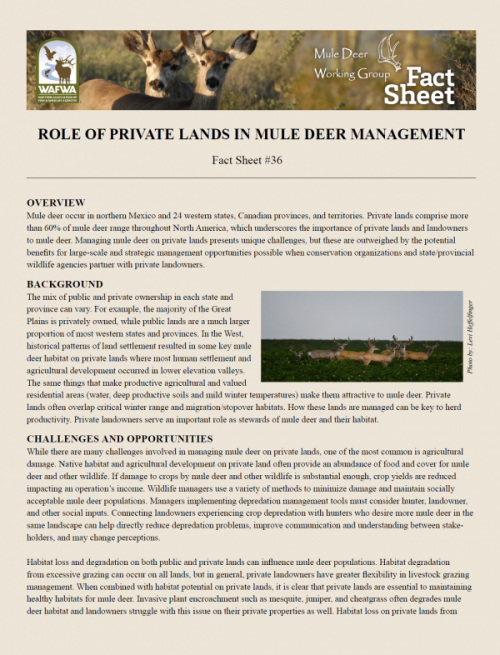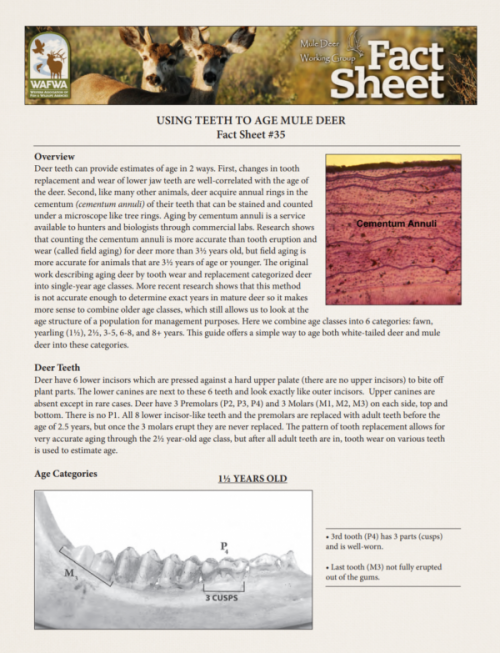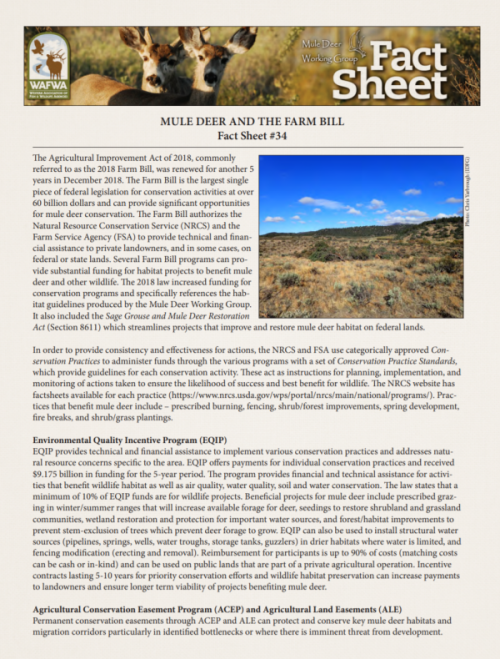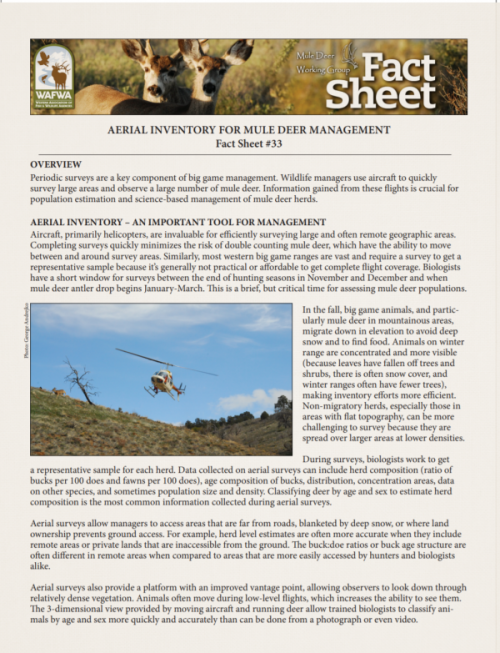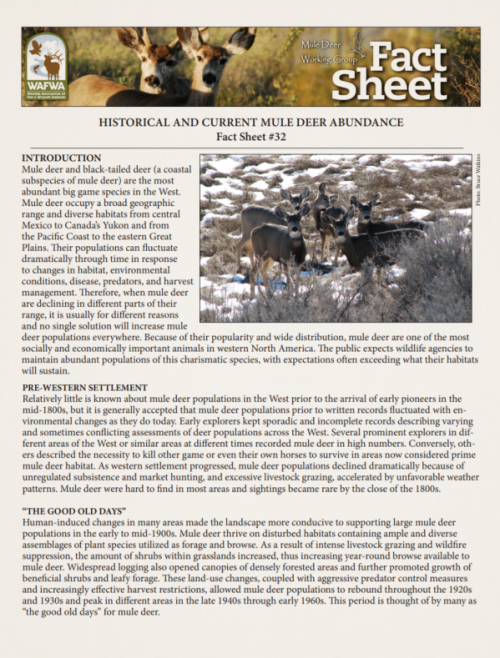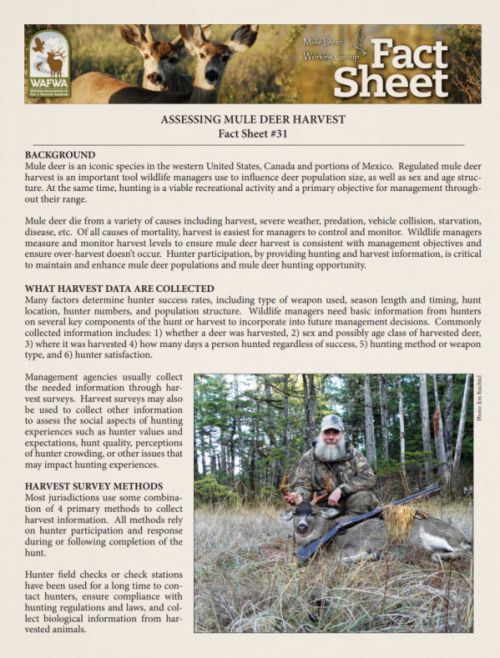Home
›
Use of Trail Cameras for Managing Mule Deer
Posted by WAFWA on January 30, 2023
We sometimes consider remotely placed automated cameras (trail cameras) to be a recent invention, yet remotely triggered cameras have been used since the early 1900s when trip wires and fl ash bulbs were used to capture images of wildlife. By the early 1980s, technology had advanced to include infrared beam…
Read More
Fact Sheet 39: Chronic Wasting Disease
Posted by WAFWA on May 15, 2021
A product of the Mule Deer Working Group – Sponsored by the Western Association of Fish & Wildlife Agencies. Produced with support from the Mule Deer Foundation (www.muledeer.org) – Approved January 2021…
Read More
Fact Sheet 38: Habitat Projects on Fed Public Lands WEB
Posted by WAFWA on May 14, 2021
Achieving successful conservation outcomes for mule deer often requires working closely with multiple stakeholders, including state and federal agencies, tribes, landowners, and non-governmental organizations (NGOs). Understanding how these different organizations operate and engage with each other to develop and implement cooperative habitat conservation projects is important for planning purposes. This…
Read More
Fact Sheet 37: Mule Deer GPS Collar Technology
Posted by WAFWA on January 1, 2021
Global Positioning System (GPS) collars have widespread use in mule deer research and management, relying on a network of satellites to record the animal’s location at regular time intervals. Data collected from GPS collars are commonly used to analyze mule deer movements, distribution, survival, and habitat use. Advances in technology…
Read More
Fact Sheet 36: Role of Private Lands in Mule Deer Management
Posted by WAFWA on January 1, 2021
Mule deer occur in northern Mexico and 24 western states, Canadian provinces, and territories. Private lands comprise more than 60% of mule deer range throughout North America, which underscores the importance of private lands and landowners to mule deer. Managing mule deer on private lands presents unique challenges, but these…
Read More
Fact Sheet 35: Using Teeth to Age Mule Deer
Posted by WAFWA on January 1, 2020
A product of the Mule Deer Working Group – Sponsored by the Western Association of Fish & Wildlife Agencies. Produced with support from the Mule Deer Foundation (www.muledeer.org) – Approved January 2020…
Read More
Fact Sheet 34: Mule Deer and the Farm Bill
Posted by WAFWA on January 1, 2020
A product of the Mule Deer Working Group – Sponsored by the Western Association of Fish & Wildlife Agencies. Produced with support from the Mule Deer Foundation (www.muledeer.org) – Approved January 2020…
Read More
Fact Sheet 33: Aerial Inventory for Mule Deer Management
Posted by WAFWA on January 1, 2019
A product of the Mule Deer Working Group – Sponsored by the Western Association of Fish & Wildlife Agencies. – Approved January 2019 Produced with support from the Mule Deer Foundation • www.muledeer.org…
Read More
Fact Sheet 32: Historical and Current Mule Deer Abundance
Posted by WAFWA on January 1, 2019
A product of the Mule Deer Working Group – Sponsored by the Western Association of Fish & Wildlife Agencies. Produced with support from the Mule Deer Foundation (www.muledeer.org) – Approved January 2019…
Read More
Fact Sheet 31: Assessing Mule Deer Harvest
Posted by WAFWA on January 1, 2019
A product of the Mule Deer Working Group – Sponsored by the Western Association of Fish & Wildlife Agencies. Produced with support from the Mule Deer Foundation (www.muledeer.org) – Approved January 2019…
Read More
